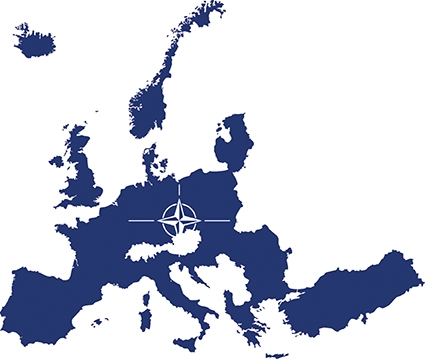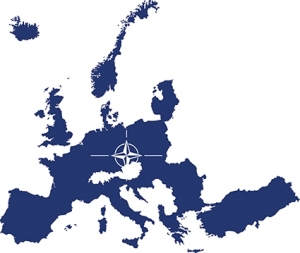Should NATO Fear Russia?
ANALYSIS
On July 5, the European Union extended economic sanctions against Russia by six more months. The decision was related to the annexation of Crimea and the support of separatism in Eastern Ukraine. For some years now, Poland, the Baltic States and other member states of NATO have been worrying about Russia. Therefore, either they reinforce their army or reinstate mandatory military service. One can understand why: Russia frightens them.
In March 1992, after the USSR collapsed, Transnistria, the eastern part of the Republic of Moldova, claimed independance. Currently, even if Russia does not recognize the self-proclaimed Pridnestrovian Moldavian Republic, Moscow still supports the separatist government. The posterchild of this support is nothing if not the 1,500 Russian soldiers based there. Less visible, 70% of the national budget comes from Moscow. In this way, Russia ensures a continuation of the status quo.
In August 2008, ten years ago, Russia invaded Georgia with a blitzkrieg, resulting in Moscow ‘protecting’ the regions of Abkhazia and South Ossetia, then recognized their independance. The result is alike that of Transnistria. In 2018, the territorial dispute remains unresolved.
In March 2014, violent street demonstrations forced the Ukrainian President, Viktor Ianoukovytch, to flee, while the pro-european activists took power. However, the clumsiness of the new government and some russophobic statements added fuel to the fire and led to a sense of insecurity in Eastern Ukraine. Thereafter, the ‘little green men,’ supposedly Russian, supported the population there and actively equiped the rebels. Actually, Dombass and Luhansk still remain a grey-zone.
In March 2014, the Crimean peninsula was annexed by the Russian Federation through a military intervention and the elections were rejected by the United Nations.
However, in reality, this agressive behaviour from Moscow is nothing new. Russian interferences, contrary to the US, are nothing if not a part of the Russian geopolitical identity. From 1804 to 1813, the Russian Empire supported George Obrenovitch, aka Karageorge, in his will to bring Serbian autonomy from the Ottoman Empire. It is also worth remembering that Russia joined the Greek desire for independance in the hope they could use its harbors. In 1860, Bulgaria, embodied by Vasil Levski, started to struggle for independence. At that time, the Russian Empire supported the fight and played host to many secret societies. Later, during the cold war, Stalin built a protective wall by incorporating his neigbhors.
So, why is Russian geopolitics aggressive? The Russian territory is large and not easy to defend. Access by sea can be easily cut in the Bosporus Strait and in the Baltic Sea. Moreover, the majority of Russian harbors are unusable during the winter. That is the reason Russia has always wanted to have a kind of buffer zone at its borders. All the more when NATO is extending to the East.
But why did Putin’s Russia not annexe all these territories except Crimea ?
The question is relevant. In 2015, breakaway South Ossetia asked Russia to integrate its territory into the Federation. It was the same for eastern Ukraine. If Russia had annexed these territories, it would have reenforced the pro-western forces in these countries and they would have been difficult to run. By creating grey-zones, Moscow is certain that Georgia will not enter NATO. Indeed, no country can enter if it is facing a frozen conflict within its borders. In the case of Georgia and Ukraine, the Russian interferences coincided with a new step towards the EU. At the end of the day, Moldova, Ukraine and Georgia could not join NATO. In this way, Russia still has a protective circle like Stalin did to answer to the Marshall Plan.
But should NATO fear Moscow? Not at all. Indeed, if we compare NATO and Russia in numbers, here is the result: Regarding nuclear weapons, Russia and NATO come out almost equally powerful. Russia is also in step with NATO in the number of long-range aircraft.
But Russia has only 830,000 soldiers, whereas NATO has 3.2 million (almost 1 million from the USA). The North Atlantic Treaty Organization has three times more tanks and five times more armored vehicles than Russia has. It has five times more combat aircrafts and has 13 aircraft carrier against only 1 aircraft carrier for Russia. NATO also has eight times more fregates.
In total, NATO spent $954 billion in 2017, whereas Russia could only afford to spend $66.3 billion.
At the end of the day, NATO spent 15 times more than Russia, but is it enough to deter Russia from interfering?
On July 11 - July 12, dozen of heads of state and government representatives met in Brussels for the NATO Summit.
During this summit, Eastern European countries asked the US to increase the number of troops in their countries as a show of force towards Russia. Other NATO countries are also expanding their presence in Eastern Europe, like Canada, which announced plans to extend its military force in Latvia. Predictably, Moscow has slammed the NATO expansion on its western flank.
After attending the NATO Summit, Trump is heading to Finland, where he will meet Russian President Vladimir Putin.
By ANTOINE DEWAEST












